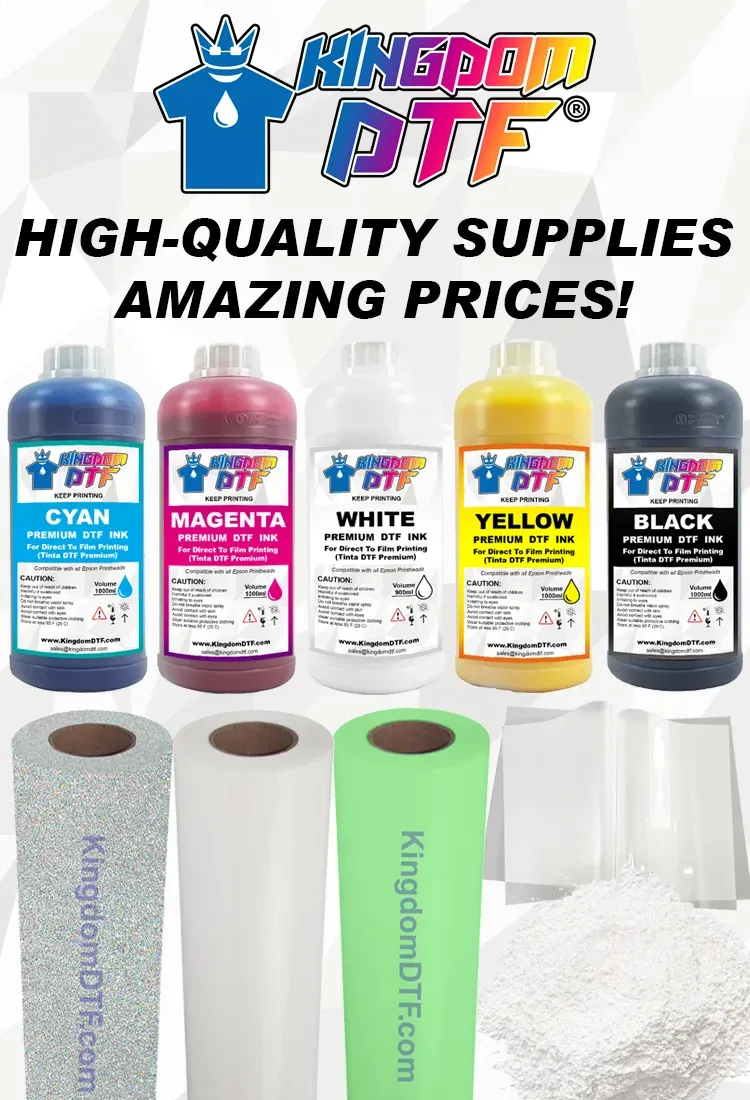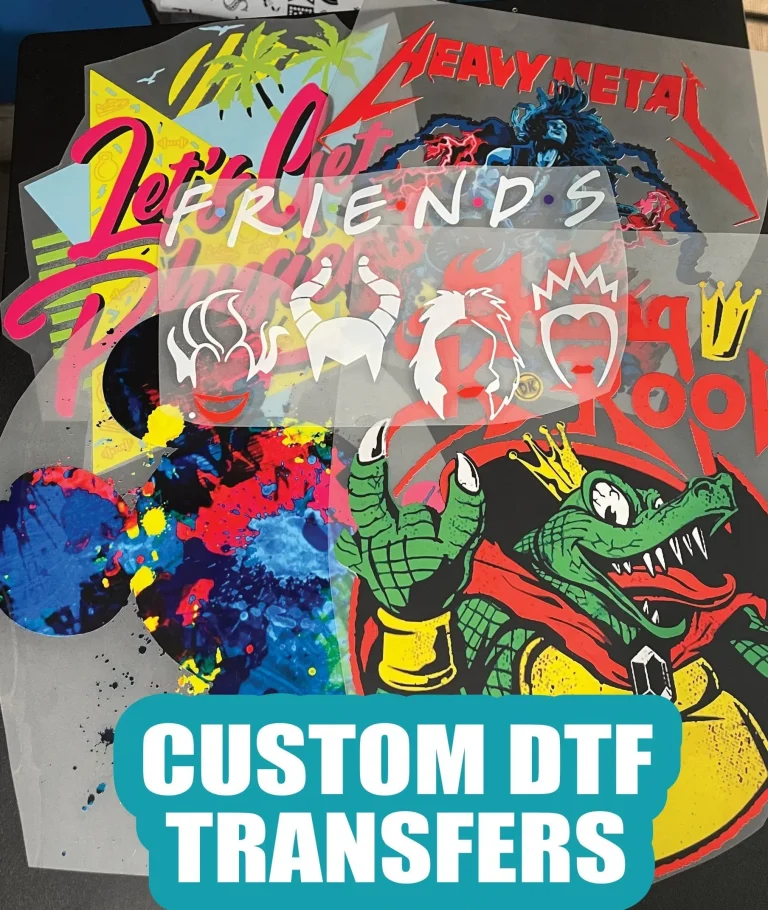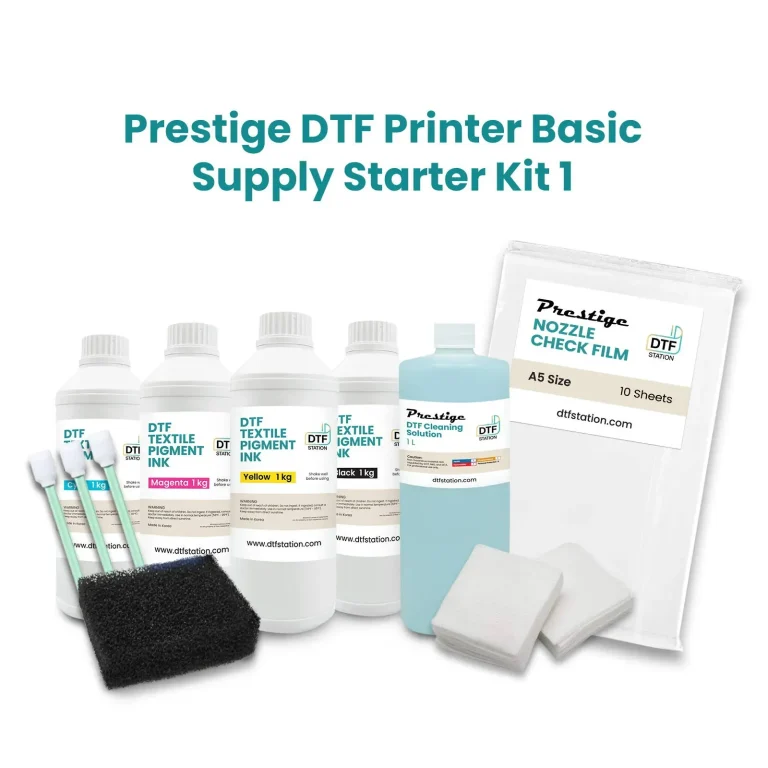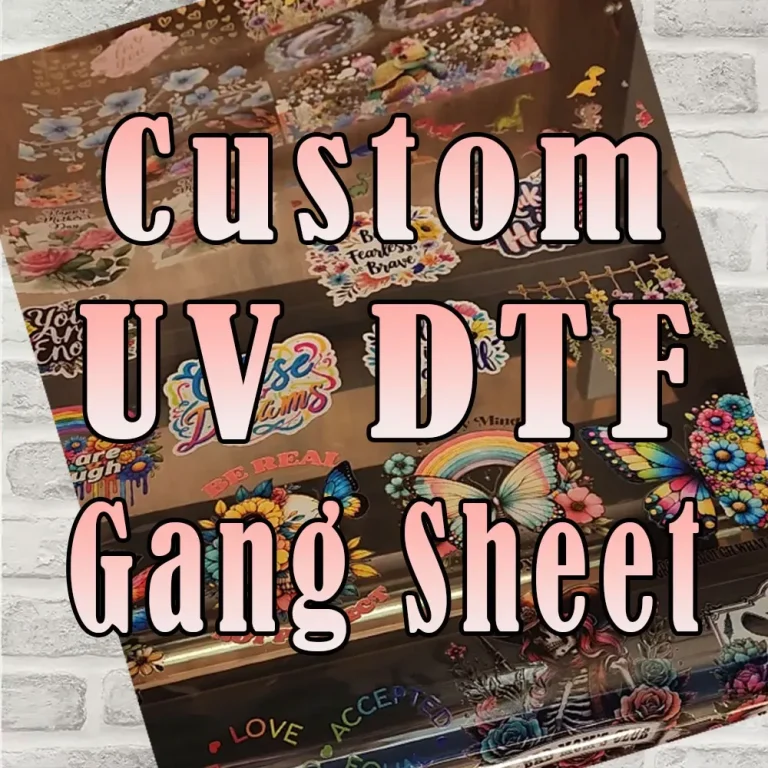DTF Printing Supplies Setup: A Step-by-Step Guide to Success
DTF Printing Supplies are essential for anyone venturing into the world of custom apparel printing, particularly with the revolutionary Direct to Film (DTF) technology. This guide will take you step-by-step through the DTF printer setup, ensuring you have all the necessary tools and knowledge to excel in your DTF transfer process. By understanding proven DTF printing techniques and equipping yourself with the right supplies, you can achieve impeccable designs that truly stand out. Whether you are a novice or a seasoned professional, our DTF supplies guide will provide insights to enhance your printing quality. Dive in as we explore the components and best practices that will lead to superior results in your custom printing endeavors.
The realm of custom textile printing has seen a significant transformation thanks to advancements in film-based printing methods. These innovations, particularly in the Direct to Film (DTF) printing sphere, have provided creators with unparalleled flexibility and precision. If you’re eager to start or refine your printing operation, familiarizing yourself with the various components of DTF printing supplies and setup is crucial. This comprehensive guide aims to demystify the DTF transfer process while introducing effective printing techniques that will elevate your craft. With our expert tips and insights, you’ll be well-equipped to navigate the nuances of DTF technology and produce standout apparel designs.
Understanding the DTF Printing Supplies
Direct to Film (DTF) printing has emerged as a versatile method for custom apparel decoration. Understanding your DTF printing supplies is crucial for achieving superior results in your printing business. Key items include a compatible DTF printer, specialized inks, transfer films, and adhesive powders. Ensuring that your equipment can handle DTF printing specifications and quality demands will significantly affect your prints’ vibrancy and durability.
Moreover, quality DTF printing supplies play a vital role in the DTF transfer process. Choosing the right film and adhesive ensures optimal ink transfer to your garments, allowing for detailed and sharp designs. High-quality materials minimize issues like ink bleeding and peeling after washing, which can detract from your end product. Implementing the best supplies sets a solid foundation for successful Direct to Film printing operations.
Essential Equipment for DTF Printer Setup
Setting up your DTF printer begins with gathering essential equipment tailored for this printing technique. Key components include a DTF printer that supports high-quality output, such as models from Epson or Mimaki. Additionally, the use of appropriate printing software, like Adobe Illustrator, guarantees that you can create designs that meet precise standards while upholding high resolution.
Don’t forget critical items such as heat presses and film sheets. A reliable heat press is necessary to ensure that the transfer process adheres the printed design to the intended fabric effectively. With all equipment correctly set and calibrated, you are on your way to enjoying the capabilities of DTF printing techniques to produce stunning, long-lasting apparel.
Lastly, document the entire DTF printer setup process meticulously. This attention to detail will aid you in future adjustments and troubleshooting, resulting in a smoother operation over time. Remember that each element of your DTF supplies directly impacts the final print quality, making the right choice paramount.
Optimizing the DTF Transfer Process
The DTF transfer process is pivotal to successful printing, and optimizing it can lead to significant enhancements in quality. First, ensure that you immediately apply the hot melt adhesive powder after printing, as this will enhance the bond between ink and fabric. Timing is critical—if the adhesive is applied too late, you risk poor adhesion, which can lead to failures during washing.
Another factor to consider is the curing phase post-application. Preheating your heat press to the correct temperature, usually around 330°F to 350°F, is crucial. Additionally, consistent pressing times and techniques tailored to the fabric type will guarantee optimal results. Each of these factors contributes to the effectiveness of the DTF transfer process, ultimately achieving vibrant and durable prints.
Advanced DTF Printing Techniques
Once you have mastered the basics of DTF printing, exploring advanced printing techniques can set your works apart in a competitive market. Techniques such as layering designs or experimenting with various textures and finishes enable you to create unique looks. This experimentation allows artists and business owners to push the limits of what’s possible in DTF printing.
In addition, consider scaling designs for various applications, such as creating intricate patterns for smaller items or bold graphics for larger apparel. Each new technique or design approach adds to your repertoire, making it easier to cater to diverse consumer preferences. Staying innovative with DTF printing techniques will ensure you remain competitive and relevant within the custom printing landscape.
A Comprehensive DTF Supplies Guide
To ensure success in the DTF printing process, a comprehensive DTF supplies guide becomes indispensable. This guide should cover everything from selecting the right printer and inks to identifying the best brands of transfer films and adhesive powders. Providing this information helps beginners make informed choices and empowers seasoned printers to refine their processes.
Additionally, keeping an inventory management system for your DTF supplies can streamline operations. Tracking supplies prevents shortages and facilitates timely reorders, ensuring that your printing process remains uninterrupted. An effective DTF supplies guide not only enhances individual practices but also contributes to the overall quality of the final products that reach the consumers.
Best Practices for DTF Printing
Adhering to best practices in DTF printing is essential for achieving optimal results consistently. Start by ensuring you always use quality materials throughout the printing process. This includes sourcing inks and films from reputable suppliers to reduce risks such as flaking or discoloration after washing.
Moreover, maintaining your printer’s health is equally crucial. Regularly clean the print heads and perform necessary maintenance checks to prevent clogs and maintain print quality. Implementing a best-practices approach will not only streamline the printing process but also significantly reduce production errors, leading to higher customer satisfaction and repeat business.
Frequently Asked Questions
What are the essential DTF printing supplies needed for setup?
To set up your DTF printing supplies, you’ll need a quality DTF printer, suitable film sheets, hot melt adhesive powder, a reliable heat press, and compatible design software. These components are crucial for achieving superior Direct to Film printing results.
How do I properly set up my DTF printer for printing?
For a successful DTF printer setup, follow the manufacturer’s installation guidelines, ensure the correct driver for DTF printing is installed, use DTF-specific inks, and conduct test prints to check quality and color accuracy.
What is the DTF transfer process and how does it work?
The DTF transfer process involves printing your design onto a film, applying adhesive powder immediately, curing it, and then heat pressing the printed film onto the fabric. This ensures a durable and vibrant print on apparel.
What DTF printing techniques are necessary for high-quality results?
Key DTF printing techniques include mirroring your designs before printing, ensuring high resolution (at least 300 DPI), and adjusting printer settings to the highest quality to achieve vivid colors and clear graphics.
How do I maintain my DTF printing supplies for longevity and performance?
To maintain your DTF printing supplies, use high-quality inks and films, perform regular printer maintenance, and conduct test runs to find the best settings. Keeping your equipment clean will also enhance its performance.
What common mistakes should I avoid when using DTF printing supplies?
Common mistakes in DTF printing include not mirroring designs, using inconsistent quality supplies, neglecting printer maintenance, and skipping the wash test for the final product. Avoiding these will lead to better printing outcomes.
| Step | Description | Key Tips |
|---|---|---|
| 1 | Gather essential equipment including DTF printer, computer, heat press, film sheets, and adhesive powder. | Ensure high quality for all supplies. |
| 2 | Set up your printer according to manufacturer instructions, including driver installation and ink specifications. | Conduct test prints for quality assurance. |
| 3 | Prepare your designs by mirroring them and ensuring they are at least 300 DPI. | Carefully create or import designs using appropriate software. |
| 4 | Print your design directly onto the DTF film. | Use the highest quality printer settings. |
| 5 | Apply the adhesive powder immediately after printing, and cure properly. | Shake off excess powder gently. |
| 6 | Transfer the design to fabric using a heat press, ensuring proper temperature and timing. | Preheat the heat press adequately before pressing. |
| 7 | Allow curing time and conduct a wash test to ensure durability. | Consider a 24-hour curing period for optimal results. |
Summary
DTF Printing Supplies are essential for achieving top-notch results in custom apparel printing. By carefully following the structured setup process outlined above, from gathering the right equipment to executing the printing and transfer techniques, you can ensure high-quality and durable designs that stand out. Prioritizing the use of quality materials and keeping up with maintenance will elevate your printing game. With the right approach, you can master DTF printing and create stunning apparel that resonates with customers. Happy printing!






